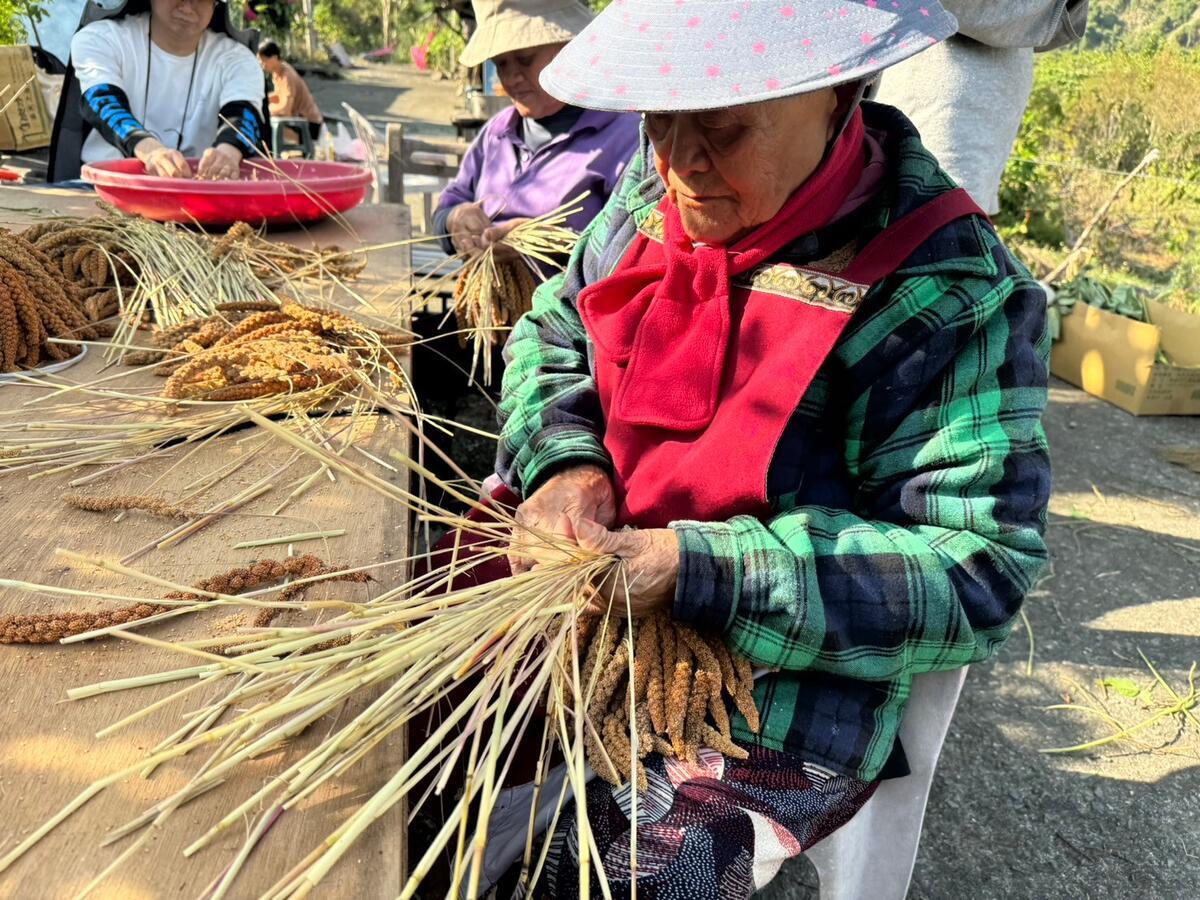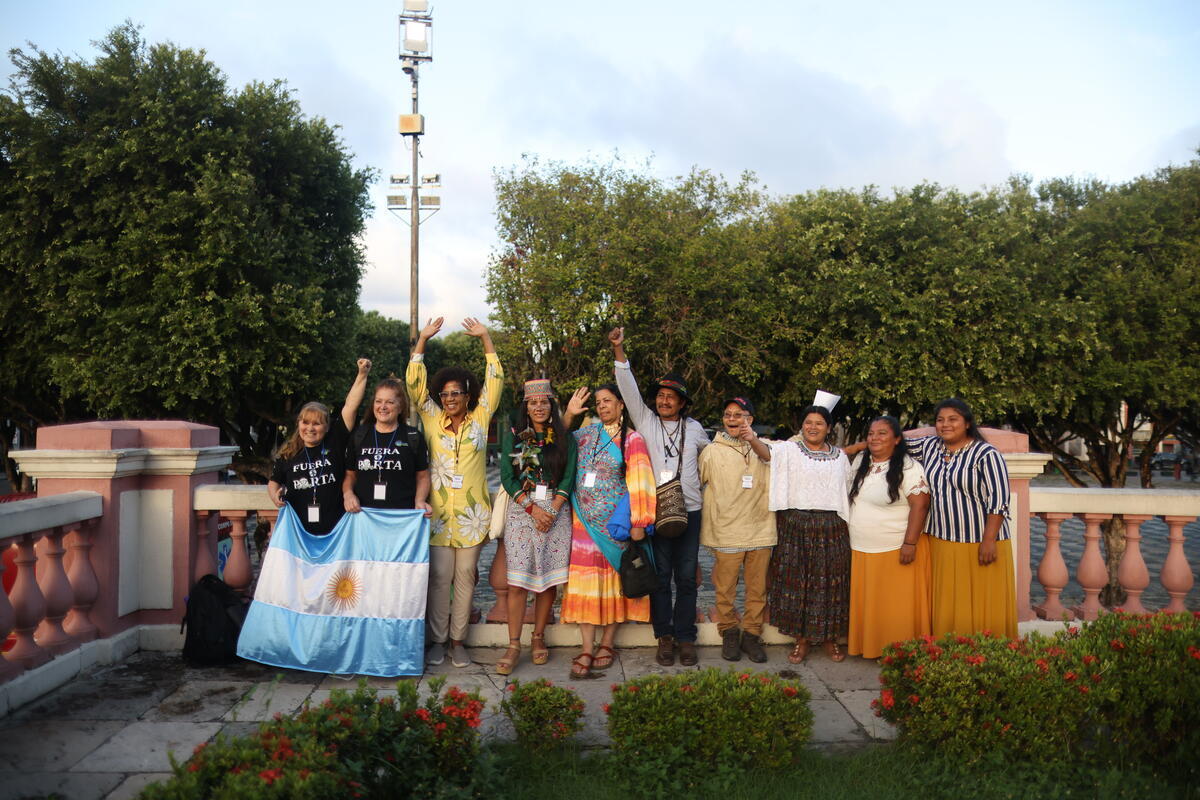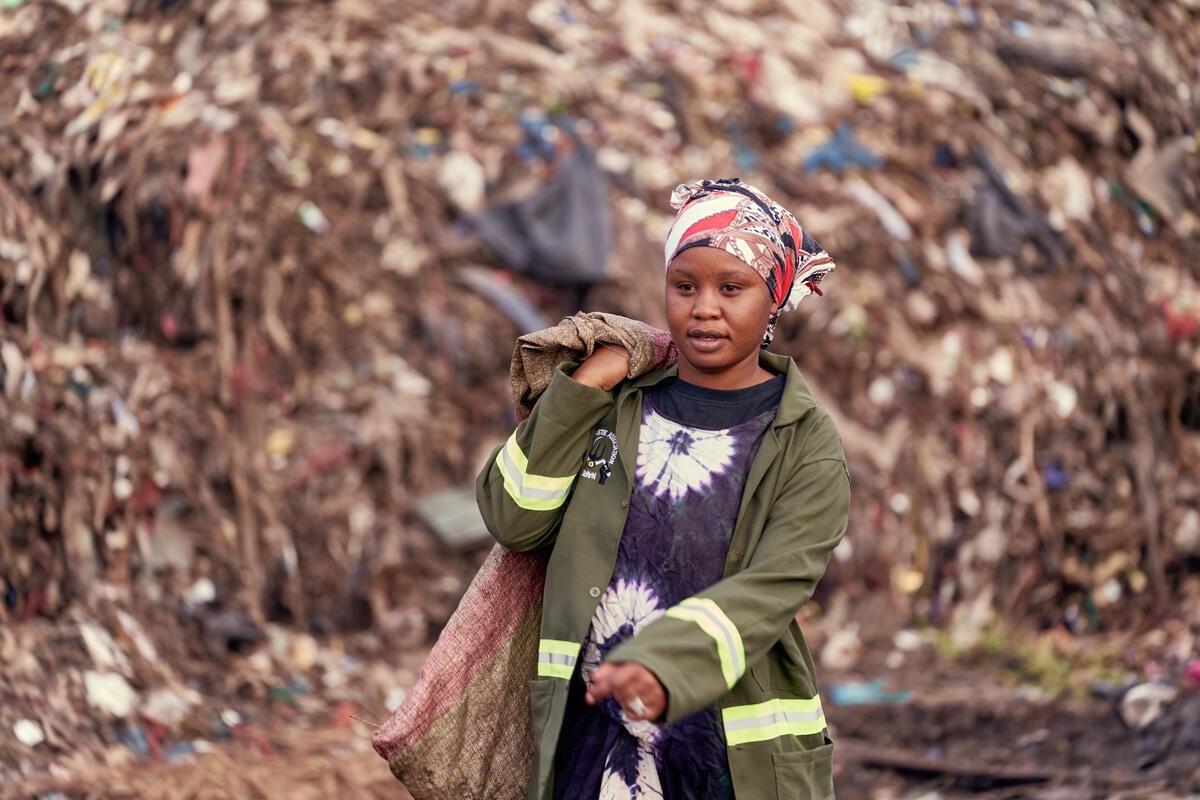“Ojos hacen fe.” Those are the words of Lucy Martín, an inspiring Cuban researcher with Oxfam in Havana. She has lived through decades of change in Cuba, while remaining grounded in the reality of farmers there.
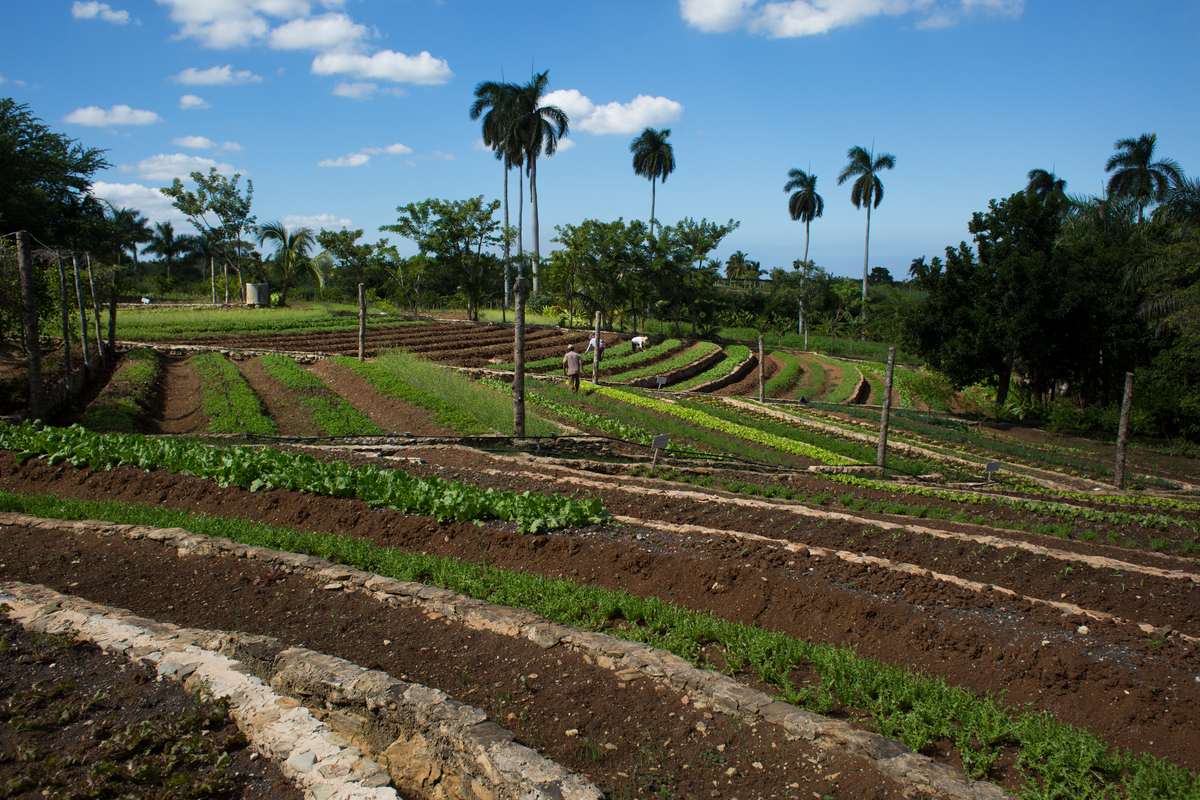
Finca Marta is a family farm situated just 20km from Havana in Caimito, Artemisa province, Cuba.
She uses those words – “seeing is believing” in English – to explain the importance of tangible examples that show how transforming our food system is possible. In Cuba, despite scarcity and a system where many challenges still remain, the country has been successfully innovating in ecological farming since the early ‘90s.
Cuba’s agricultural transformation
Cuba is a small country of about 11 million people. In the 1990s, the end of Soviet support brought, among other things, a massive exodus from the countryside into cities. Nowadays, almost 80% of the Cuban population lives in cities. Only 20% remains in rural farming settings.
During the years that followed the end of Soviet support in the ‘90s – a time called the “Special Period” in Cuba – agriculture changed abruptly. It went from an industrialised model heavily backed by agro-inputs and imports of food, to a void. No exports of commodities, no imports of inputs, no cash… and much less food. This time of great shock and desperation for all Cubans was also a time of empty soils, empty farms and empty plates in the countryside.
Farmers everywhere, not just in Cuba, are very innovative and resilient people. They are familiar with crises (droughts, floods, pests), but they also have an amazing drive for not giving up and trying new things. And the Cuban Special Period brought to the country a unique change in agriculture and farming – a new ‘agroecological crisis response.’
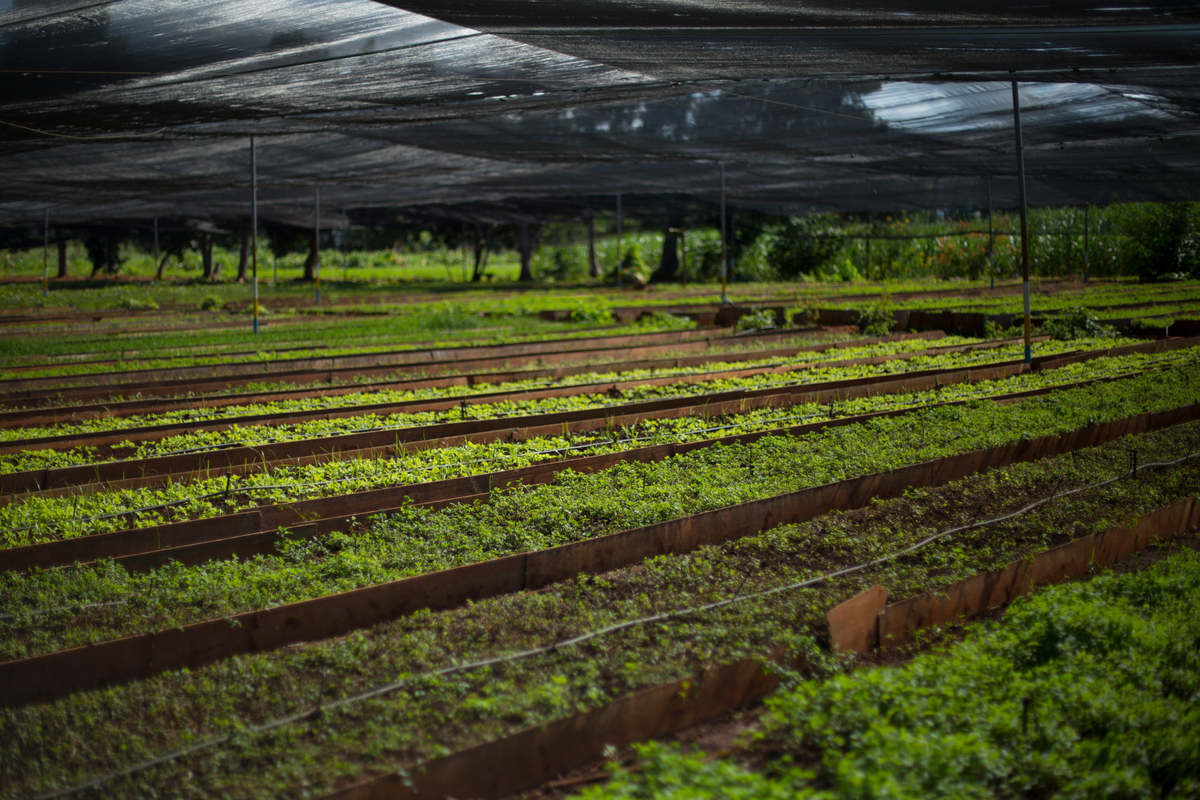
Finca Alamar is an ecological farm situated in Havana, Cuba. The peppermint used in the mojitos in the famed Bodeguita del Medio restaurant comes from this farm, so you can rest assured your mojitos don’t contain traces of pesticides.
Growing food for people, not just commodities for exports, became one big priority for the country. This also meant growing food for people and without the overuse of agrotoxics and water, using knowledge of nature, soils, seeds and pests to substitute chemicals with local-sourced solutions, and applying ecological intelligence.
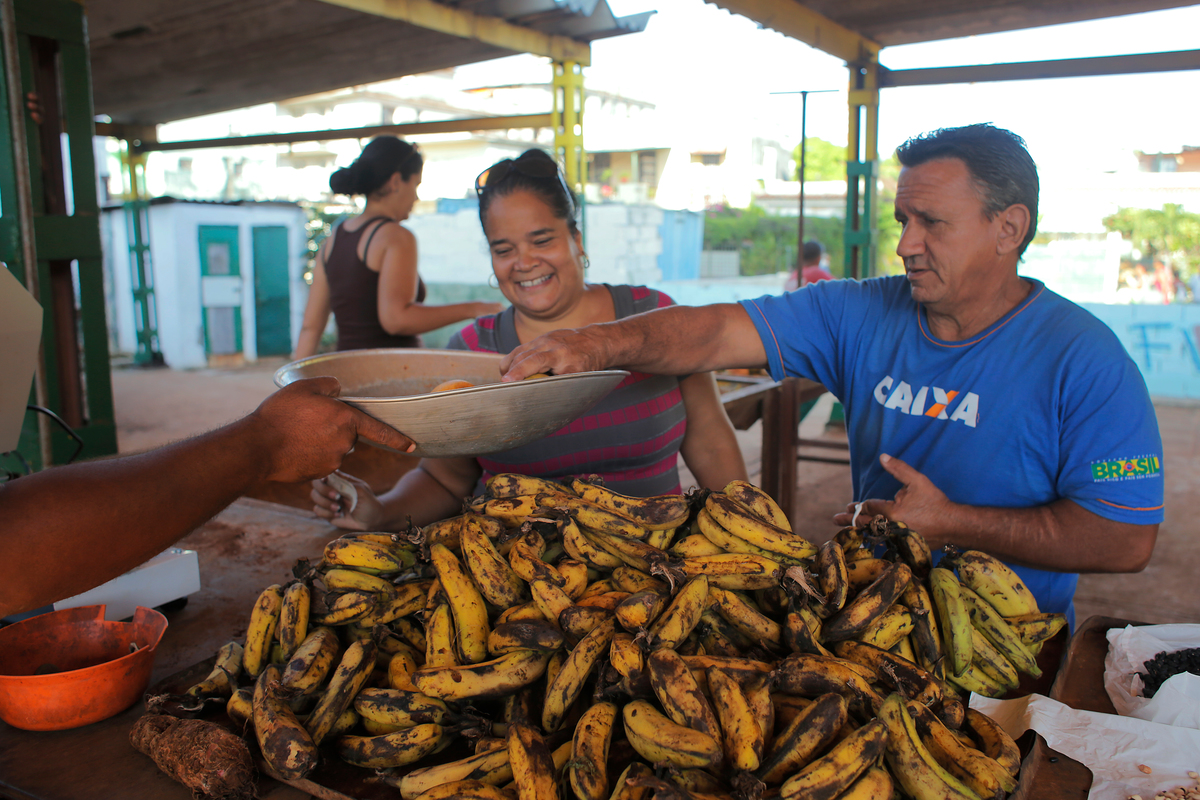
Local food market in Havana. Unlike many of its Latin American counterparts that have succumbed to the impacts of industrial chemical agriculture, Cuba has leaped forward with the help of its scientists and farmers.
Cuba has 2% of the Latin American population, but 11% of its scientists. Back in the ‘90s, they used this vast resource in capacity to start transferring research and development to where it was most needed: agroecology, or how to grow food for people, with people and with nature.
Farming and food in Cuba today
In the two decades since the Special Period the country has made significant progress.
According the UN World Food Program, in the last 50 years Cuba has largely eradicated poverty and hunger, thanks to comprehensive social protection programmes. It also ranked 67th out of 188 countries in Human Development and is among the most successful in achieving UN Millennium Development Goals (MDGs).
Today, Cuba has more than 30 research and development centers dedicated to finding solutions for smallholding farmers, and a battery of policy incentives to promote ecological farming, family farming, farming cooperatives and urban farming based on agroecology.
Currently Cuban farmers, both in cities and rural areas, produce close to 80% of the vegetables and fruits the country consumes. In addition, the number of farmer cooperatives increased from 15% of the cultivated land in 1989 to more than 70% today, and they produce about 70% of the food grown nationally (86% of the maize and beans grown, and 90% of the vegetables).[1] The country also reduced its consumption of agrochemicals by 75% in the last 20 years.[2]
In cities, urban farmers supply about 50% of the vegetables and fruits consumed locally, a share that continues to increase in recent years. The program of Urban Farming is one of the seven most important programs prioritised by the Minister of Agriculture. It has created about 300,000 jobs in cities, with 50% of those going to women and the urban youth.
A way forward
In spite of all these signs of progress, many problems remain for agriculture and beyond. Cuba still imports close to 70% of the food the country needs, mostly grains and livestock products, representing 14% of total imports into the country and close to two billion US dollars per year. However, it has also been estimated that by avoiding the imports seeds and agrochemicals, the country is savings an estimated amount of US$ 50 million a year.[3]
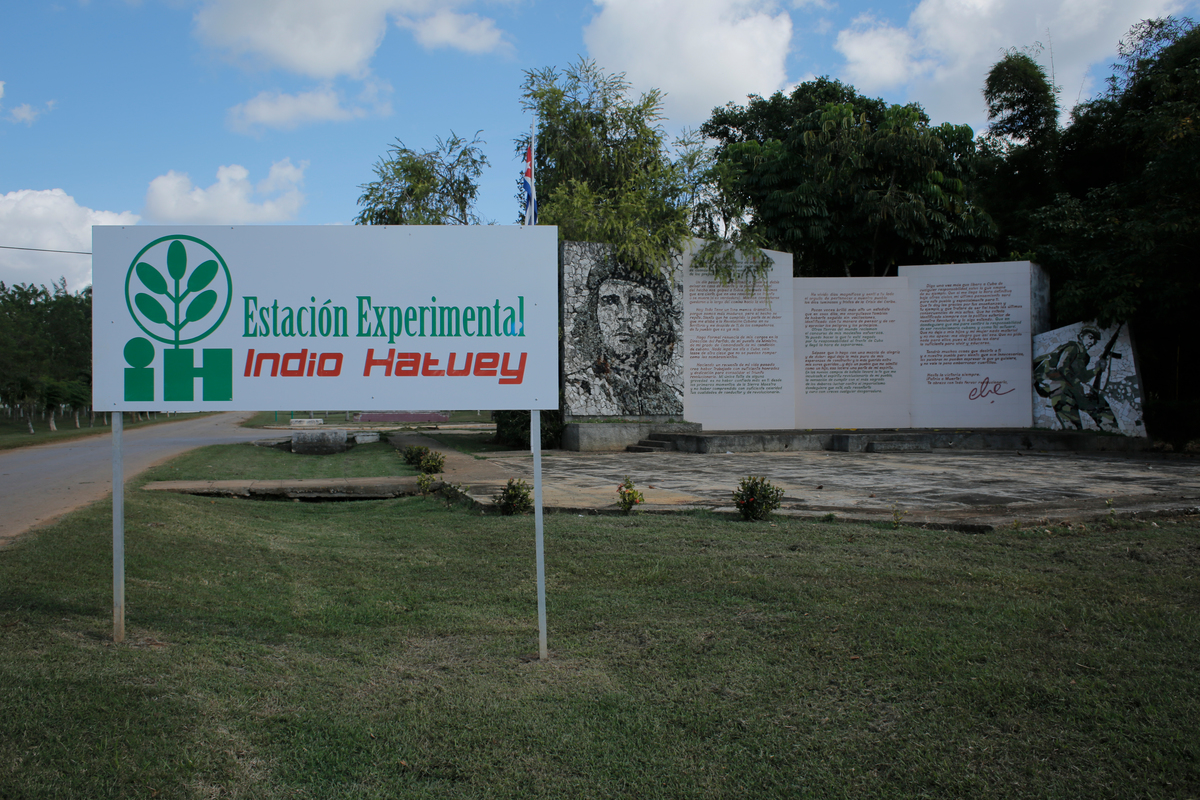
The Indio Hatuey Experimental Station was founded in March 1962. Using an interdisciplinary approach based on the principles of agroecology, its aim is to explore agroecological production models aimed at guaranteeing human well-being, and improving the ecosystems of the Cuban agrarian sector.
Fernando Funes Aguilar, an internationally-known Cuban researcher in agroecology, has estimated that Cuba could be food self-sufficient in three years by transforming half of the cultivated land in the country (three million hectares) to intensive, smallholder agroecological systems. This optimistic projection is based on the fact that in 2006, smallholding farmers produced 65% of the food produced in Cuba by cultivating only 25% of its agriculture land.
Cuban experience in agroecological farming is not a perfect situation, nor is it a perfect system, but it shows a way forward in times of crisis, and a better, more resilient way of feeding people for the future. Seeing the case of Cuban agroecology is believing a better system is not only possible, but happening already.
References:
[1] Martin, Lucy. 2015. Cuba crece. La Agricultura campesina sostenible. El caso cubano. Oxfam. La Habana Cuba, Julio 2015.
[2] Funes Aguilar and Vázquez Moreno. 2016. Avances de la Agroecología en Cuba. Estación Experimental de Pastos y Forrajes India Hatuey (Ed), La Habana, Cuba.
[3] Íbidem.
Reyes Tirado is Food and agriculture researcher at Greenpeace Research Laboratory at the University of Exeter, UK.

